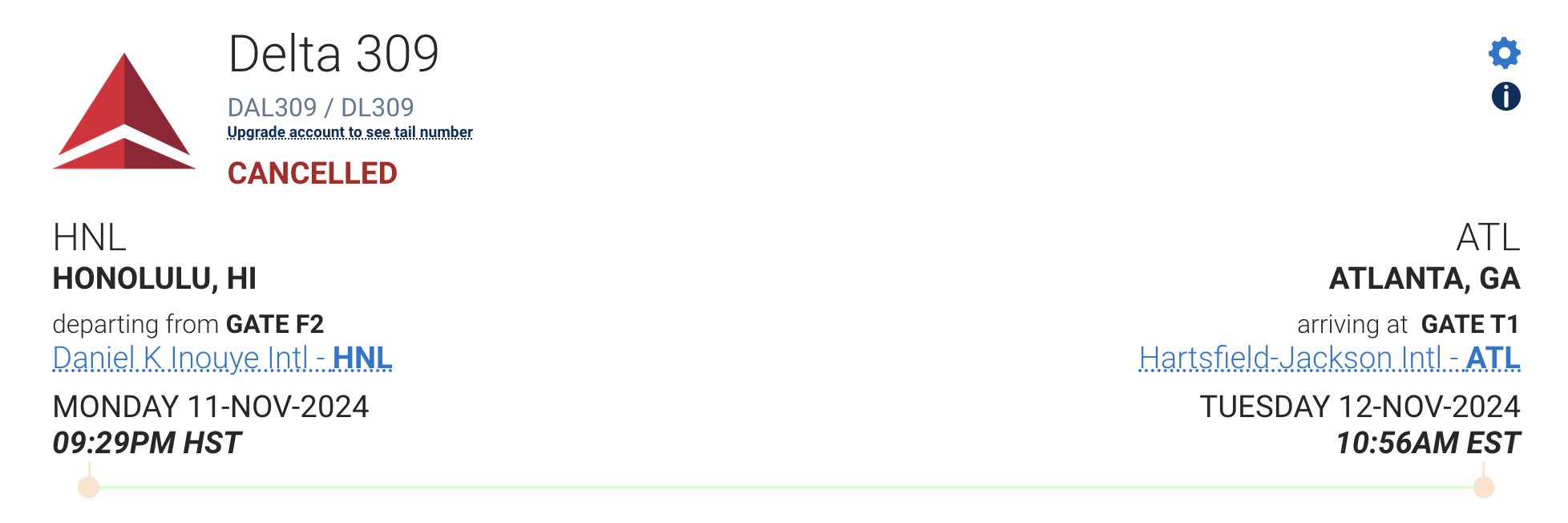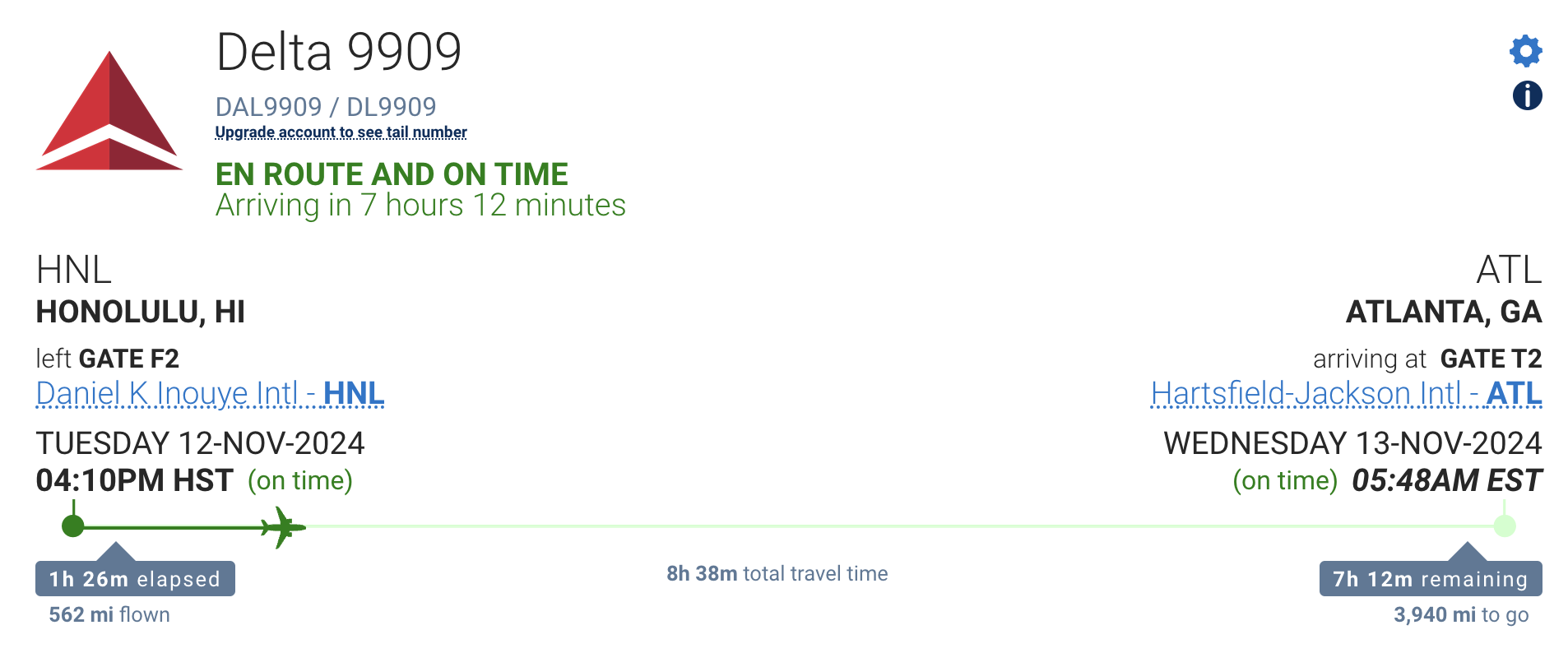Airline scheduling is a complex, ever-changing puzzle. Airlines must balance crew scheduling, comply with work-hour rules, track aircraft for maintenance, and respond to unexpected events like weather delays, technical issues, and diversions. When any of these disruptions occur, airlines rely on operations teams to adjust schedules, which sometimes involves assigning “unusual” or one-time flight numbers. Here’s a closer look at why these unique flight numbers appear.
Our friend’s experience with Southwest is a perfect example. When his flight from Albany was canceled due to mechanical issues, Southwest arranged a one-time flight to pick up stranded passengers from a nearby city. This flight helped Southwest adjust operations smoothly to keep passengers moving.
Delays, Cancellations, and Diversions
Unusual flight numbers often appear when a flight is rescheduled or delayed until the following day. For example, this Delta flight from Honolulu to Atlanta was canceled and rescheduling it for the next day requires a new flight number to avoid conflicts in the schedule, as airlines can’t have two flights with the same number on the same day.

The flight was rescheduled for the next day, but now it has a different number to prevent confusion.

In cases of emergency diversions, such as our JetBlue flight that had to make an unscheduled landing for a medical emergency, the flight may also receive a new number to ensure the systems accurately record the journey’s adjusted path. Here’s our story from when we were on that diverted JetBlue flight.
Repositioning and Ferry Flights
When airlines need to move an empty aircraft from one airport to another, a “ferry flight” is arranged, often with a one-time flight number. These flights don’t carry passengers and aren’t part of the public schedule but are essential for positioning aircraft for upcoming flights or maintenance.
Ad-hoc and Charter Flights
Airlines occasionally operate special charter flights for events, groups, or sports teams that aren’t part of their regular schedule. These charter flights are given unique, temporary flight numbers to avoid conflicts with standard operations and ensure these special trips run independently of the regular schedule.
Seasonal or Temporary Services
Airlines often add extra flights to accommodate high-demand events like the holidays or major sporting events. For example, airlines add temporary flights to handle the surge in travelers for events like the Super Bowl, using unique flight numbers to differentiate these flights from the regular schedule. Similarly, for high-traffic trade shows such as the Consumer Electronics Show (CES) in Las Vegas, Delta is adding flights from key cities, including New York and Seattle, to meet the spike in demand.
Special Aircraft Movements: Maintenance and Testing Flights
Special aircraft movements, such as maintenance, testing, or training flights, also use unique numbers. These flights ensure aircraft readiness and crew certification, and distinct flight numbers are needed to differentiate them from passenger operations, simplifying tracking for maintenance and compliance purposes.
Final Thought
While unusual flight numbers might seem strange initially, they’re a vital tool for airlines to keep operations running smoothly. Whether rescheduling after a cancellation, repositioning an aircraft, or adding extra flights for major events, these flight numbers are part of the airline’s ongoing efforts to keep the skies moving smoothly.
Want to comment on this post? Great! Read this first to help ensure it gets approved.
Want to sponsor a post, write something for Your Mileage May Vary, or put ads on our site? Click here for more info.
Like this post? Please share it! We have plenty more just like it and would love it if you decided to hang around and sign up to get emailed notifications of when we post.
Whether you’ve read our articles before or this is the first time you’re stopping by, we’re really glad you’re here and hope you come back to visit again!
This post first appeared on Your Mileage May Vary
